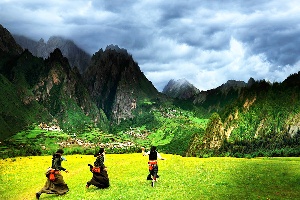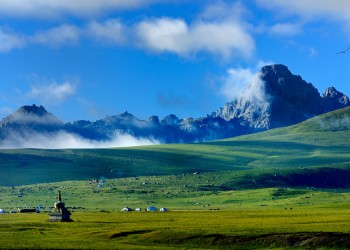In recent years, more and more tourists began to promote this Tibetan area, and Gannan has a new adjective - nine colors Gannan. What colors make up the colorful Gannan? Let's look down:
Red
(Tibetan Architecture, Monk Robes, Danxia Landform)
Red is a color with special significance and plays an important role in Tibetan culture. Red is regarded as a symbol of auspiciousness, happiness, and peace. In Tibetan architecture, red is also a common color, often used to paint doors and Windows and decorate houses, meaning family reunion and happiness.


Orange
(Gannan Rich Coral, Agate)
coral is one of the seven treasures of Buddhism, is regarded as the treasure of the sea


Purple
(The traditional noble dress of the Tibetan people)
In traditional Tibetan dress, purple is often regarded as a sacred and noble color, representing power and status. Therefore, some Tibetans choose to wear purple traditional clothing on important occasions or festivals to show their identity and status.


Yellow
(Mitral, Temple gold roof, Rotary, Ghee)
Yellow holds great significance in Tibetan Buddhism as it represents wisdom and peace. In Gannan's Tibetan Buddhist temples and buildings, yellow decorations are commonly used, and the prayer drum is also adorned in yellow to symbolize sacred and faithful worship.


Blue
(Blue sky and blue lake on the plateau)
The lake is crystal clear in Gannan. The scenery is beautiful, with a blue and cloudless sky. Under such a sky, viewing lakes, grasslands, snow-capped mountains, and other natural landscapes will be particularly magnificent and clear.


Green
(Gannan landscape beautiful)
The green here is so vibrant and lush. The alpine meadows were teeming with wildflowers, and the distant mountains were cloaked in green trees, creating a stunning scene.


Deep Green
(Heavy dark green mountains)


Black
(Yak, Black tent)
Yaks are one of the main sources of income for the Tibetan people. The Tibetan people depend on yaks for milk, meat, leather and other necessities of life. Yaks are also used to cultivate land and transport goods, and are an important pillar of life for the Tibetan people.


White
(White tower, sheep, Hada)
Present a hada is a way to express respect and blessing, which is commonly seen on weddings, funerals, sacrifices and other occasions; The white pagoda and white sheep symbolize the purity and simplicity of the Tibetan people.






































